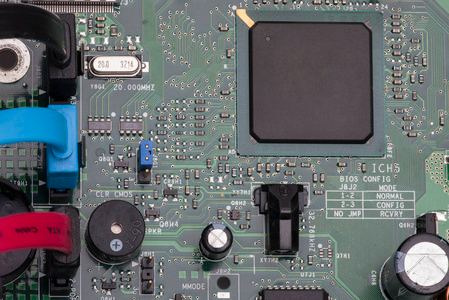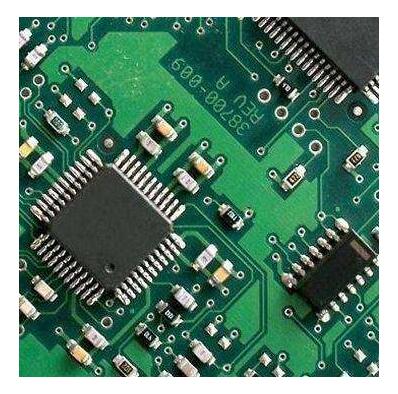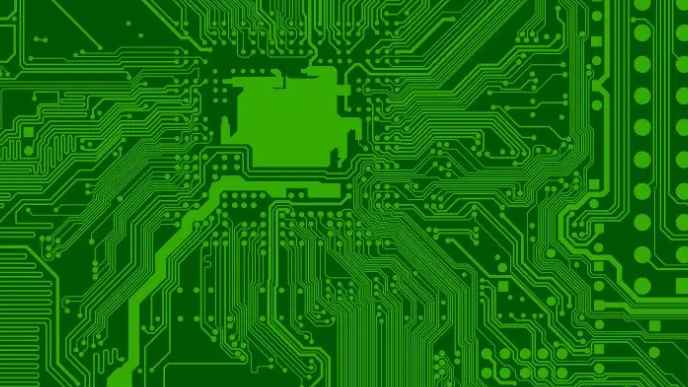
On the PCB board, there is an electronic component, if you do not pay attention to the existence of it, this component is crystal oscillator. If the microprocessor is the heart of the computer board, it is the heart of the microprocessor.

The concept of crystal oscillator:Crystal oscillator is short for crystal oscillator, in fact commonly said crystal oscillator also includes crystal resonator, because the core is a quartz crystal.
Before understanding crystal vibration, first understand the two concepts of resonance and oscillation. Resonance is the meaning of vibration together, that is, "resonance" in physics. Oscillations can be understood as cyclic reciprocating motion.
The quartz crystal is cut, polished and coated with a silver layer, from which two electrodes are drawn and packaged. This is the quartz crystal resonator. A quartz crystal resonator with a starting circuit is an oscillator.
The crystal oscillator is a clock element in the circuit, which can provide a stable clock frequency for the microprocessor. The frequency of crystal oscillator is closely related to the reaction speed of chip. The higher the frequency of crystal oscillator, the faster the chip will run. Usually we say that the computer, mobile phone has a point card, crash is the crystal frequency can not keep up with the reason.
How crystal oscillators work Crystal oscillators are oscillators that use the piezoelectric effect of quartz crystals or ceramics. When a voltage is applied to a crystal, it vibrates; The crystal vibrations, in turn, generate voltage. Crystal timing is a thing in the microscopic world. It is incredible that a weak voltage can cause it to deform, but its timing principle is the same as that of a pendulum. Although pendulum clocks are hard to see now, it is still easier to understand.
The type of crystal oscillator is formed by adding a circuit to a crystal. Crystal vibration is divided into quartz crystal vibration and ceramic crystal vibration according to the materials used; Crystal vibration according to the packaging material of metal, ceramic or plastic, according to the pin also divided into direct insert (DIP) and SMT. Crystal vibration is divided into low frequency crystal vibration (measured by KHz) and high frequency crystal vibration (measured by MHz). The higher the frequency of crystal vibration, the greater the energy consumption, but the lower the frequency, the larger the volume. According to the scale of the circuit, crystal vibration is divided into passive crystal vibration and active crystal vibration. The resonator (Xtal) is a passive crystal oscillator and the oscillator (XO) is an active crystal oscillator. The oscillator has its own voltage and can oscillate by itself without the need for an external element. A resonator plus a driving circuit becomes an oscillator.
Ceramic crystal oscillator: also known as ceramic resonator, is passive crystal oscillator, lower precision than quartz crystal oscillator, generally used for remote control, toys and other products. Ceramic crystal oscillator I have not seen the patch, ceramic pin crystal oscillator is divided into 2 pin and 3 pin. The 3 pin crystal oscillator actually encapsulates the 2 capacitors to be configured in the ceramic. The middle pin is the common end of the two capacitors, and the other two pins are directly connected to the chip without polarity.

Quartz crystal oscillator: Crystal oscillator generally refers to quartz crystal oscillator, it is divided into quartz crystal resonator and quartz crystal oscillator. Quartz crystal resonators have 2 feet, also have 4 feet, but there is no 3 feet, 2 feet crystal oscillator two feet no polarity. Even the 4-pin crystal oscillator is basically passive crystal oscillator. In fact, only 2 pins have actual function, and the other 2 pins are just to make the crystal oscillator more firmly fixed on the circuit board. 4 feet above the crystal oscillator is generally quartz crystal oscillator, it has the function of oscillation, of course, is the active crystal oscillator.
Tuning fork crystal: The quartz wafer of tuning fork crystal is shaped like a tuning fork, which is encapsulated in a cylinder, also called cylindrical crystal. The common frequency of tuning fork crystal oscillator is 32.768KHz. Because often used in clock circuit also known as clock crystal oscillator. 32768 is 2 to the power of 15. Connect 32768 to a 16-bit counter. Every time the 16th bit changes, it is exactly 1 second. Clock crystal oscillator mainly provides clock frequency for the chip, so that the chip can start and work orderly according to the designed program.
Screen printing on the crystal oscillator: it is difficult to understand the meaning of the screen printing LOGO, text and numbers on the crystal oscillator. Even if the frequency is marked, sometimes the unit size is not known, but most of the default is MHz, and there is also KHz. A few numbers after the decimal point on the number may indicate the precision of the crystal oscillator frequency. It may also have something to do with baud rate.
Crystal vibration is mostly represented by Y, X, and on the printed circuit board. It is also marked with Z, G, CR, CRS, CRT, BC and other text symbols. The characters may be different according to the type and purpose of crystal vibration.
At present, I have only seen these four crystal oscillators. Maybe other crystal oscillators have also been seen, especially the patch crystal oscillators. Because it is difficult to identify them, even if there is a silk screen, it is difficult to see them clearly.







